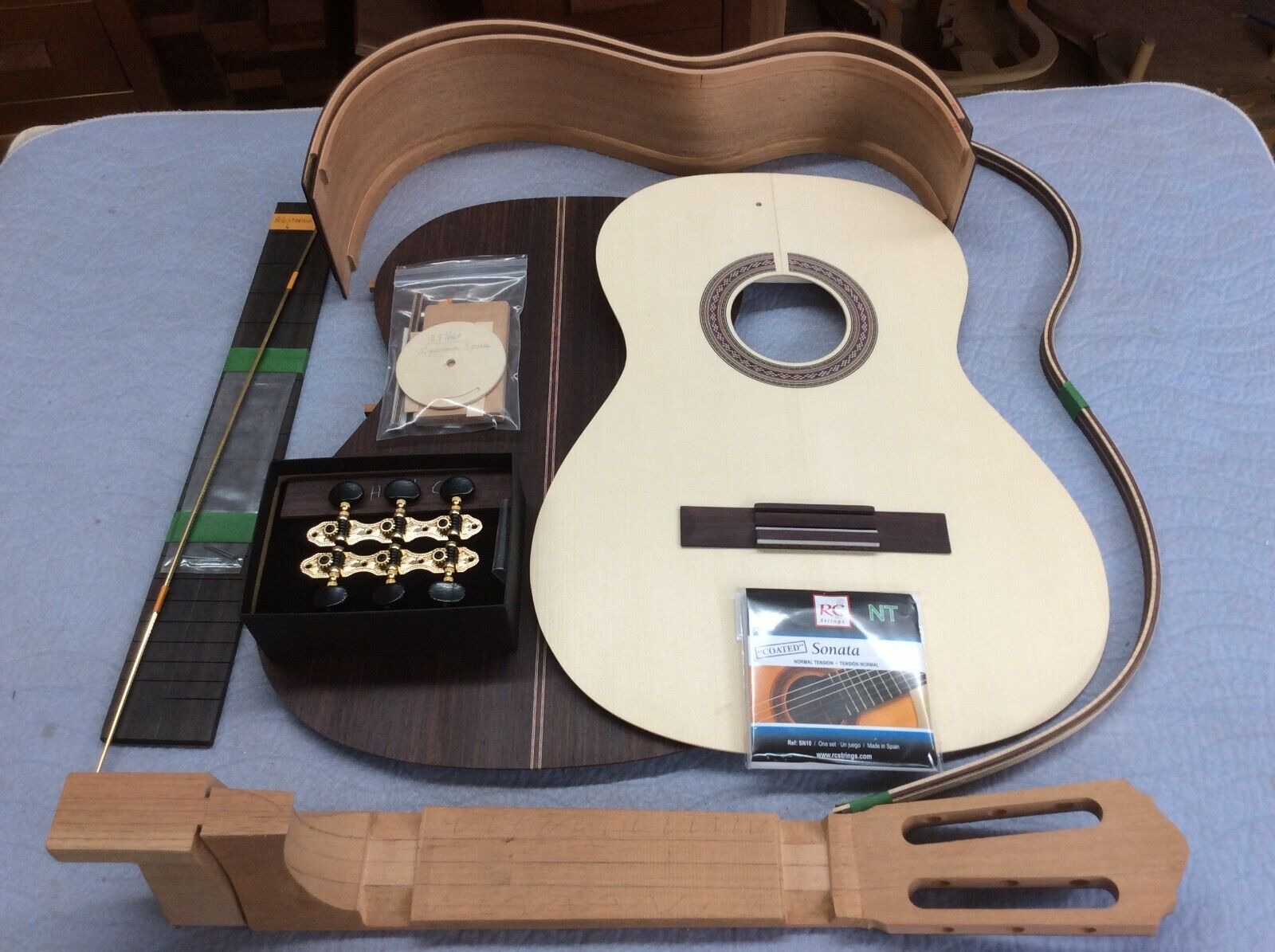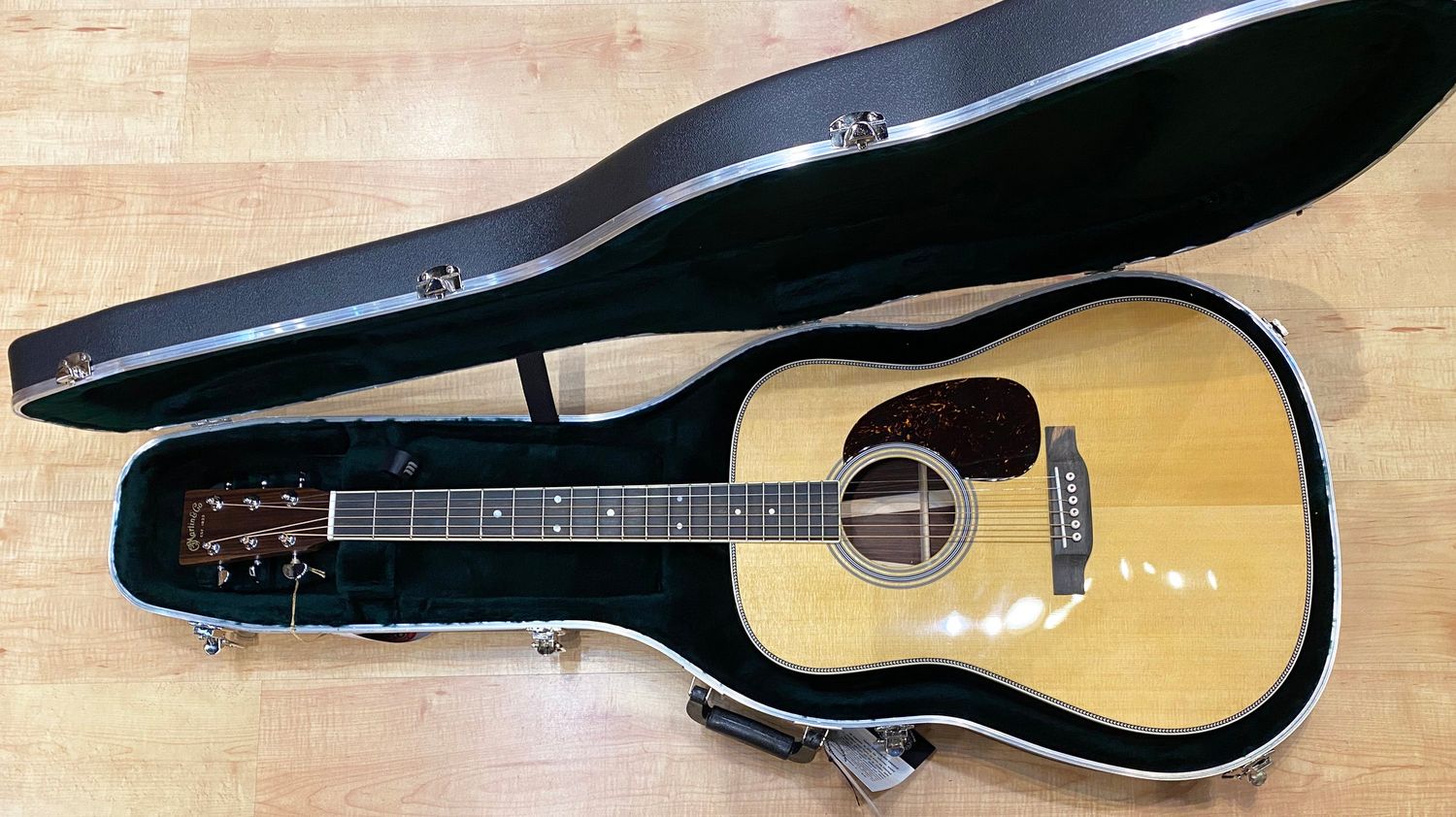Home>Instruments>Guitar>How Wide Is A Guitar Neck


Guitar
How Wide Is A Guitar Neck
Published: February 15, 2024
Discover the ideal guitar neck width for your playing style. Learn how to choose the right guitar neck width for your needs. Explore different guitar neck widths and find the perfect fit for you.
(Many of the links in this article redirect to a specific reviewed product. Your purchase of these products through affiliate links helps to generate commission for AudioLover.com, at no extra cost. Learn more)
Table of Contents
Introduction
Welcome to the fascinating world of guitars, where every component plays a crucial role in shaping the instrument's playability and sound. One such component, the guitar neck, is a vital feature that significantly influences the overall feel and performance of the instrument. In this article, we'll delve into the dimensions of guitar necks, with a specific focus on width. Understanding the width of a guitar neck is essential for players, as it directly impacts the ease of fretting chords, executing intricate solos, and finding a comfortable hand position.
The width of a guitar neck refers to the distance between the outer edges of the fretboard, where the frets are located. This measurement plays a pivotal role in determining the spacing between the strings, which, in turn, affects the ease of fretting and overall hand comfort during play. As a result, the width of a guitar neck is a critical factor in a player's overall experience with the instrument.
In the subsequent sections, we will explore the standard width of guitar necks, as well as variations such as wide and narrow necks. Additionally, we will examine the factors that influence guitar neck width, providing valuable insights for both aspiring and seasoned guitarists. Whether you're a beginner seeking the right instrument or an experienced player looking to expand your collection, understanding the nuances of guitar neck width is essential for making informed decisions. So, let's embark on this enlightening journey into the realm of guitar neck dimensions and discover the impact of width on the playing experience.
Standard Guitar Neck Width
When it comes to the standard width of guitar necks, it’s important to note that there are variations across different types of guitars. However, for the classic six-string acoustic and electric guitars, the typical neck width at the nut, which is the topmost part of the neck where it meets the headstock, ranges from approximately 1.65 inches (42mm) to 1.75 inches (44.5mm). This width is often referred to as “nut width” and serves as a primary point of reference for assessing the overall width of the neck.
At the 12th fret, which marks the midpoint of the scale length, the neck width for standard guitars usually increases slightly, typically ranging from 2.04 inches (52mm) to 2.20 inches (56mm). This widening of the neck towards the body facilitates comfortable hand positioning and fretting as the player moves up the fretboard.
It’s important to highlight that the standard neck width measurements can vary based on the guitar manufacturer, model, and even the era in which the instrument was produced. For instance, vintage guitars may feature slightly different neck widths compared to modern counterparts, and certain guitar makers offer custom neck widths to cater to specific player preferences.
Understanding the standard neck width for guitars is crucial for players when selecting an instrument that aligns with their playing style and comfort preferences. Whether it’s the sleek and fast feel of a narrower neck or the more substantial grip of a wider neck, finding the right balance is essential for an enjoyable playing experience.
Wide Neck Guitars
For players seeking enhanced fretting comfort and spacing between strings, wide neck guitars offer a compelling solution. These instruments feature necks with broader dimensions, providing more room for finger placement and reducing the likelihood of inadvertently muting adjacent strings during play. The wider neck width, particularly at the nut, allows for greater string spacing, which can be advantageous for players with larger hands or those who prefer a more generous layout for fretting chords and executing complex fingerstyle techniques.
Wide neck guitars are especially popular among fingerstyle players and individuals transitioning from instruments with wider necks, such as classical guitars, to steel-string acoustic or electric guitars. The broader neck width contributes to a more open and spacious feel, enabling players to navigate the fretboard with ease and precision.
When exploring the world of wide neck guitars, players will encounter various options catering to different musical styles and preferences. Some guitar manufacturers offer models with extended nut widths, often exceeding 1.75 inches (44.5mm), to accommodate the specific needs of players seeking a roomier neck profile. These wider neck dimensions can greatly enhance the overall playability and comfort, particularly for individuals with larger hands or those who prefer a more expansive fretting surface.
It’s important to note that while wide neck guitars provide distinct advantages in terms of fretting comfort and string spacing, they may not be suitable for all players. Those with smaller hands or individuals accustomed to narrower necks may find the transition to a wide neck guitar initially challenging. However, for players seeking a more spacious and accommodating fretting experience, wide neck guitars offer a compelling option that can significantly enhance their playing enjoyment and performance.
Narrow Neck Guitars
Contrary to wide neck guitars, narrow neck guitars feature slimmer dimensions that cater to players seeking a more compact and streamlined fretting experience. These instruments are characterized by narrower neck widths, particularly at the nut, which can range from approximately 1.60 inches (40.6mm) to 1.68 inches (42.7mm). The reduced spacing between strings on narrow neck guitars can appeal to players with smaller hands or those who prefer a tighter fretting layout for chords and single-note playing.
Narrow neck guitars are often favored by individuals who value a faster and more agile feel when navigating the fretboard. The narrower neck profile allows for quicker transitions between chords and facilitates rapid scale runs and intricate lead guitar techniques. Additionally, players accustomed to electric guitars with slim necks may find narrow neck acoustic guitars or other stringed instruments with similar dimensions to be familiar and comfortable to play.
While narrow neck guitars offer a more compact and streamlined feel, it’s important to consider individual preferences and playing styles when selecting an instrument. Some players may find the reduced spacing between strings on narrow neck guitars to be conducive to their playing techniques, while others may prefer the more expansive layout provided by wider neck instruments.
It’s worth noting that the choice between narrow and wide neck guitars is a matter of personal preference, and both options offer unique advantages tailored to different playing styles and hand sizes. Ultimately, the decision to opt for a narrow neck guitar hinges on the player’s comfort and the specific feel they seek when engaging with the instrument.
Factors Affecting Guitar Neck Width
The width of a guitar neck is influenced by various factors, each playing a significant role in shaping the instrument’s playability and the overall experience for the player. Understanding these factors is pivotal for both manufacturers and players, as it contributes to the diverse range of neck profiles available in the market.
1. Guitar Type and Style
Different types of guitars, such as classical, acoustic, and electric, often feature distinct neck widths tailored to their respective playing styles and traditions. For example, classical guitars typically have wider necks to accommodate fingerstyle playing and intricate chord voicings, while electric guitars may offer slimmer neck profiles for faster lead playing and shredding techniques.
2. Player Comfort and Preference
Individual player comfort and preference play a crucial role in determining the ideal neck width. Players with larger hands may gravitate towards wider necks, seeking ample spacing between strings for comfortable fretting, while those with smaller hands or a preference for faster playing may opt for narrower necks.
3. Musical Genre and Playing Techniques
The musical genre and specific playing techniques employed by a guitarist can also influence the preferred neck width. For instance, fingerstyle players and individuals focusing on intricate chord work may favor wider necks to accommodate complex finger placements, while lead guitarists and those emphasizing speed and agility may lean towards narrower neck profiles for effortless fretboard navigation.
4. Manufacturing and Design Considerations
Guitar manufacturers meticulously design neck profiles to align with the overall aesthetic and functional aspects of an instrument. The choice of neck width is often a deliberate decision, influenced by the intended target audience, market trends, and the desired playability of the instrument. Custom guitar makers may also offer tailored neck widths to cater to individual player requirements and preferences.
5. Historical and Cultural Influences
The evolution of guitar neck widths is intertwined with historical and cultural influences, including the traditions of luthiers and the preferences of renowned guitarists. Vintage instruments often reflect the neck width trends of their respective eras, contributing to the diverse range of neck profiles available to contemporary players.
By considering these factors, players can make informed decisions when selecting a guitar with a neck width that aligns with their playing style and comfort preferences. Additionally, manufacturers can leverage these insights to develop diverse neck profiles that cater to the varied needs and preferences of guitarists across different genres and playing techniques.
Conclusion
Exploring the dimensions of guitar necks, particularly the width, unveils a diverse landscape shaped by player preferences, musical styles, and manufacturing considerations. The standard width of guitar necks, encompassing variations at the nut and the 12th fret, serves as a foundational aspect that significantly influences the playability and comfort of an instrument. Whether it’s the broad and spacious feel of a wide neck guitar or the streamlined agility of a narrow neck counterpart, the dimensions of the neck play a pivotal role in shaping the playing experience.
Wide neck guitars offer generous spacing between strings, providing ample room for finger placement and enhancing fretting comfort, making them an appealing choice for fingerstyle players and individuals with larger hands. On the other hand, narrow neck guitars cater to those seeking a more compact and agile feel, facilitating swift transitions between chords and intricate lead guitar techniques.
Factors such as guitar type and style, player comfort and preference, musical genre, manufacturing considerations, and historical influences collectively contribute to the diverse range of neck profiles available in the market. Understanding these factors empowers players to make informed decisions when selecting a guitar that aligns with their unique playing style and comfort requirements.
Ultimately, the dimensions of a guitar neck, including its width, are deeply intertwined with the artistry and individuality of players, reflecting a harmonious blend of tradition, innovation, and personal expression. As players embark on their musical journeys, the quest for the perfect neck width becomes a captivating exploration, where the instrument becomes an extension of their creativity and a conduit for sonic storytelling.
By embracing the nuances of guitar neck width, players can unlock new dimensions of expression and comfort, forging a deeper connection with their instruments and amplifying the joy of musical discovery. Whether it’s the warmth of a wide embrace or the agility of a nimble touch, the dimensions of a guitar neck become a canvas for players to craft their sonic narratives, enriching the tapestry of musical artistry.











